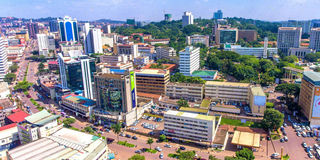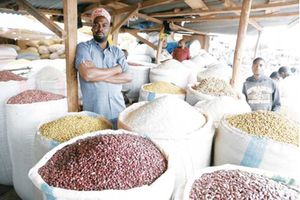
Perhaps the most critical conference in Africa this year commences on January 9 in Kampala, the capital of Uganda, and concludes on January 11.
This is not just another assembly; it’s a matter of life and death, concerning whether Africans will retire to bed with full, half-full, or, tragically, empty stomachs.
For countries like Kenya, the stakes are high as the nation seeks to permanently alleviate food insecurity for approximately 1.7 million of its citizens.
Curiously, however, the event has been shrouded in silence, akin to a church mouse.
There are no dazzling billboards or vibrant TV commercials, none of the usual pomp associated with high-profile summits.
This is the African Union’s (AU) Comprehensive Africa Agriculture Development Programme (CAADP) conference for 2025.
Perhaps it’s not surprising. The AU isn’t renowned for its flair and could win a gold medal in the Dullness Olympics.
The Kampala summit is set to discuss and hopefully endorse the draft Ten-Year CAADP Strategy and Action Plan (2026-2035).
Think of it as a new recipe for feeding the continent over the next decade, ditching the old cookbook based on the “Malabo Declaration.”
The Malabo Declaration was a bold commitment made by the AU leaders at a summit in Malabo, Equatorial Guinea—a nation ruled with an iron fist by Teodoro Obiang Nguema Mbasogo for an astonishing 43 years—back in June 2014.
However, as often happens, many African leaders were more focused on promises than on actual progress.
They vowed to eradicate hunger in Africa by 2025. Yet, hunger has only escalated during the CAADP era.
By 2022, an estimated 282 million people across the continent were undernourished, representing a staggering 20 per cent of Africa’s population—an increase of 57 million since before the Covid-19 upheaval.
By 2024, acute food insecurity had gripped 163 million Africans, nearly tripling the number from just five years prior.
Projections for 2030 paint a grim picture, suggesting Africa might bear the world’s highest number of hungry people, with 53 per cent of the globe’s chronically undernourished residing in Africa.
One of the most memorable commitments from the Malabo Declaration was that African nations would allocate at least 10 per cent of their national budgets to agriculture and rural development.
However, the execution has been underwhelming. Only a few African countries have managed to achieve this 10 per cent target.
The AU reports that Burundi, the Democratic Republic of Congo, Ethiopia, and Mali have sporadically reached this goal, with Burkina Faso, Ethiopia, Malawi, and Niger showing some consistency up to 2020. Rwanda is making strides, but for 47 of the AU’s 55 member states, this 10 per cent is more of a myth than a reality.
The reasons for this agricultural debacle are as varied as they are exasperating: from soils as depleted as an overworked farmer to technology that seems stuck in the past, from substandard seeds to inadequate infrastructure, from markets hindered by political and nationalistic barriers to investments as scarce as rain in a desert.
Additionally, policy-making often acts more as a barrier than a facilitator, and conflicts frequently undo what little progress is made.
Cereal yields in many African countries are a mere one to two tonnes per hectare, reminiscent of Europe’s agricultural output from 500 years ago!
This pitiful scenario is why donors attending the CAADP conference in Kampala might be smirking, both behind Africa’s back and increasingly, to its face.
The challenges seem insurmountable, yet recent initiatives have sparked some innovative thinking.
When Africa launched the African Continental Free Trade Area (AfCFTA) in 2018, one of its brightest promises was in agriculture.
By reducing or eliminating tariffs on agricultural products, it was anticipated to boost intra-African agricultural trade by 574 per cent by 2030.
Imagine farmers with access to a market of over 1.4 billion, enhancing sales and farm gate prices.
However, the reality has been a mixed bag. While Kenya has begun exporting tea to Ghana under the AfCFTA’s Guided Trade Initiative, and Rwanda has started sending gourmet products like coffee, tea, honey, and avocados to Ghana, the situation often resembles a food fight rather than a feast.
Too often, one country bans another’s rice, milk, eggs, maize, fruits, and vegetables.
A Kenyan rancher dreaming of prosperity believes he could grow cattle feed in Uganda and transport it back home.
“With lower production costs and higher yields in Uganda, even after dealing with border bribes and poor road conditions, it would still cost me a fraction of what I’m currently spending. All our governments need to do is dismantle these trade barriers, step aside, and wait to collect their tax cheques.”
There are several paths to ensuring African bellies are full. The failure of those in power to choose one and travel on it to success remains one of the great betrayals of our time.
If leaders can align their policies and the actions of their governments with the urgent needs of their people, perhaps the next decade will narrate a different story—one of food abundance rather than scarcity.


